Lavender is a smokable herb, but it’s not nearly as mainstream as other herbs. Many people often ask us: can you smoke lavender?
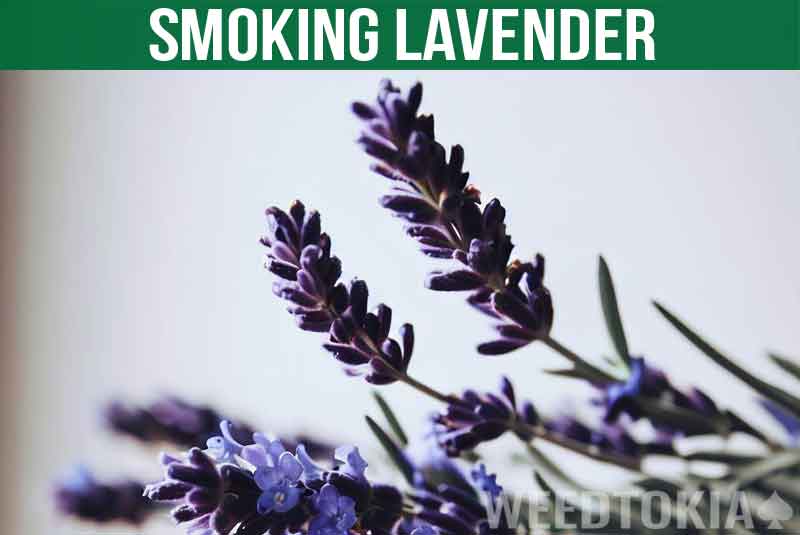
In this article, we’ll cover exactly that and everything you could possibly want to know about smoking lavender.
Table of Contents
Can You Smoke Lavender?
Yes, you can smoke Lavender after it is dried. When smoked, lavender releases phytochemical components such as linalool. It can be smoked alone or with other herbs like tobacco or cannabis.
There was a time, not so long ago as it might feel, when most people considered tobacco to be the only acceptable plant to smoke.
With recent changes in legal status and societal opinion, marijuana has been added, at least in many places and the opinions of many people, to the list of “normal” smokable herbs, but that is often considered the end of the list. In reality, the list of plants that can be smoked is much longer than we typically think.
Why Would Someone Want to Smoke Lavender?
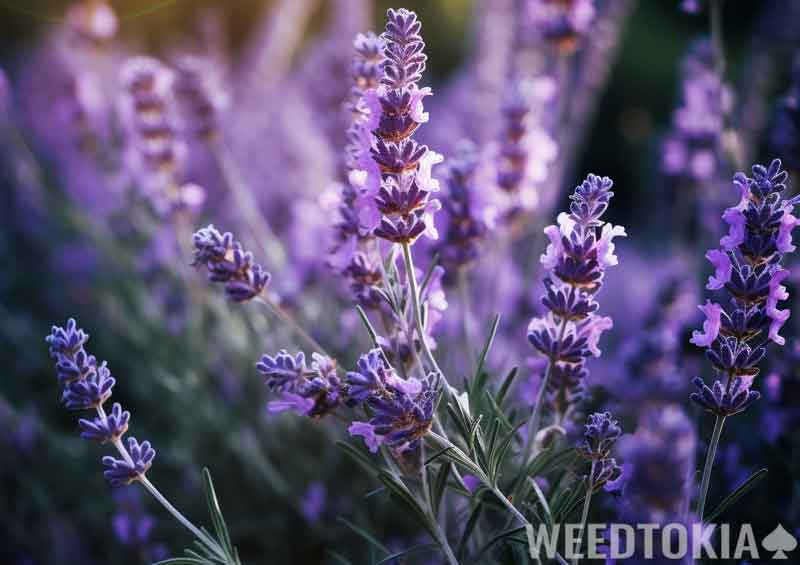
We often refer to “lavender” as if it is one particular plant species, but it’s actually an entire genus with dozens of species and hundreds of variations. If that idea seems strange or confusing, then it might be useful to picture a rose garden; each plant is slightly different in size, color, scent, and so on, but it’s easy to identify them all as “roses.” This is also true of the different species of lavender.
There are three common main types of lavender, colloquially called Spanish lavender, English lavender, and Lavandin (a hybrid between the Spanish and English types). The variations within each type all share basic traits. English lavender produces the best lavender oil, and it is the most commonly grown type, so it’s probably the type you will use for smoking. Depending on what’s available to you, you might try different variants of English lavender to see which ones you prefer.

Unlike tobacco and marijuana, lavender is easy to grow and prepare for smoking, so you may decide to grow your own. If you do, then you’ll also need to consider the different blooming seasons and plan accordingly. Spanish lavender blooms in spring, while English lavender blooms in early- to mid-summer, and Lavandin blooms in mid-to-late-summer.
Despite the surprisingly low number of clinical studies conducted on the effects of lavender, its similar uses across different cultures throughout history suggest that there has always been a broad societal assumption of its health benefits. Lavender was used in ancient Greek, Roman, and traditional Eastern medicine for its “calming effects,” which could supposedly treat anything from insomnia to anxiety to cardiovascular stress, and we have slowly continued to explore its other benefits over time. In both World War I and World War II, lavender oil was used to dress soldiers’ wounds.
Advances in science and medicine have allowed us to finally take a look at the chemical components of lavender that are responsible for these health benefits. Two of the most interesting phytochemicals we have found are a terpene called linalool and its ethyl acetate, called linalyl acetate, which are the main components of lavender oil.
Lavender Contains Linalool
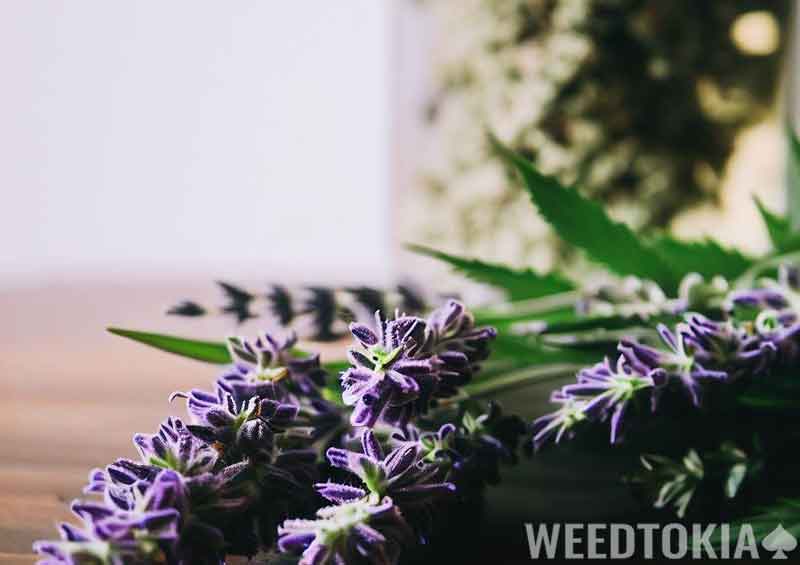
Linalool is a naturally occurring terpene alcohol. Although its name comes from linaloe wood, it is found in hundreds of plant species, mainly aromatic plants like lavender. This means that it is also a major component of the essential oils of these plants, and it’s also one of the terpenes found in cannabis. Common sense would indicate that linalool has something to do with the calming effects of all these plants, and so far, the science agrees.
The best-known effect of lavender is probably the promotion of good sleep. Data from numerous studies, including this Brazilian study conducted on mice, shows that linalool contributes to this sedative effect. Linalool, when inhaled, appears to increase sleep time without impairing motor function in the way that many sedative drugs do.
It is also often stated that lavender oil is an anti-inflammatory, and the linalool content of lavender oil may be the reason why. According to this Italian study conducted on rats, linalool plays a major role in the anti-inflammatory activity of the plants and essential oils that contain it. This supports the age-old idea that using topical lavender oil, drinking lavender tea, and even smoking lavender can reduce inflammation in the body.
Linalool-containing plants are sometimes said to be pain relievers, but this is a trickier topic to isolate since inflammation and pain go hand-in-hand. Many of the commercially available pain-relieving products that are made from linalool-containing plants like lavender are meant to target joint or muscle pain, which is often caused by inflammation. This study conducted on mice, a follow-up done by the authors of the inflammation study, indicates that while linalool can reduce different types of pain, the reduction is most significant in inflammatory pain.
These effects, as well as the effects we weren’t able to cover here or those which haven’t been discovered yet, are all produced by lavender thanks to its high linalool content (and, very likely, to some of its other chemical components). But now that we know the health claims are, to some extent, true, how do we make use of them?
How To Smoke Lavender

Lavender can be smoked on its own or in a mix with other herbs (tobacco or marijuana). It’s up to you how DIY you want the process to be; the options range from buying ready-made lavender cigarettes to growing, drying, and rolling your own lavender.
You’d think that the most convenient option would be to buy cigarettes, but it’s worth mentioning that lavender cigarettes can be a bit tricky to find. A search for them is likely to yield some tobacco cigarettes with lavender in them, some pre-rolled cannabis joints with lavender in them, and some herbal cigarettes that include lavender as a primary or secondary herb.

There are alternative ways to consume lavender in order to get the benefits of linalool and other phytochemicals. For example, drinking lavender herbal tea can, over time, lessen the symptoms of depression and anxiety, as demonstrated by this recent Iranian study.
Smoking lavender is one of the least common ways to use it, but it has the potential to give some of the greatest benefits. When you smoke an herb, its chemical components enter your bloodstream quickly via the gas exchange in your lungs, which allows them to act very quickly. This effect has not been specifically studied in lavender, but it has been studied in other smokable herbs and the inhalation of lavender oil and lavender’s individual components, like linalool, so it’s reasonable to assume for the time being that it also applies to smoking lavender. You can read about the effects of inhaling lavender oil, which is not quite the same as but very similar to smoking lavender, in this Thai medical journal article.
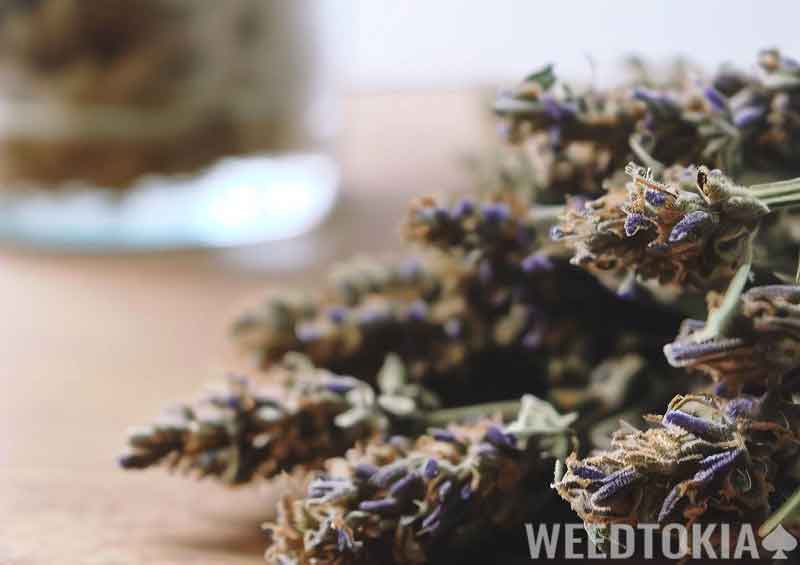
The last option may be the closest you can get to a lavender-only cigarette, depending on what’s available for purchase in your area, since they tend to have a higher percentage of lavender in the mix than tobacco or cannabis products. If you decide to try out herbal cigarettes, just be sure to read up on the effects of the other herbs in the blend before you get started so that you know what you’re getting into.
While our favorite option is to do everything yourself, we know that can be a lot of work. In fact, the process of caring for any plant from seed to flower would be too complicated for us to explain in this article, but we’ll give an overview of the project of growing your own lavender to smoke.
To make your own lavender cigarettes from scratch, you’ll need to grow some English lavender in dry sandy soil (from either seed or a nursery plant), carefully harvest the flowers early in their bloom cycle, and hang small bunches in a warm, dry place OR put them in a food dehydrator on a low setting to dry them out. The dried lavender can then be packed into cigarette tubes, rolled by hand, or even put in a pipe to be smoked.
Related Article: Can You Smoke Rose Petals?
Lavender And Tobacco

Since tobacco is the most commonly smoked herb, it’s no surprise that some people choose to smoke lavender by adding it to their tobacco or by buying loose tobacco that already has lavender added. Everything we’ve said so far about lavender still applies when it’s added to tobacco, but there are a few extra things to note.
Tobacco cigarettes with lavender have a different taste than normal tobacco cigarettes, since the lavender adds a smooth, floral note, and they will also have a different effect. Nicotine, as you may have heard before, has both stimulant and depressant effects on the nervous system. The addition of lavender can balance these effects out further so that you get the alert buzz of nicotine high while keeping calm and level-headed.

The combination of lavender and tobacco has even been used by some people to quit smoking tobacco. Adding lavender to tobacco cigarettes and gradually changing the ratio of the herbs can be a way to wean yourself off of the addictive tobacco while at the same time reducing the side effects of nicotine withdrawal with the calming effects of lavender. We do want to point out that this is not a well-studied or scientifically proven method for quitting tobacco, but it may be something to keep in mind if you’ve already been considering tobacco-and-lavender cigarettes.
Lavender And Marijuana
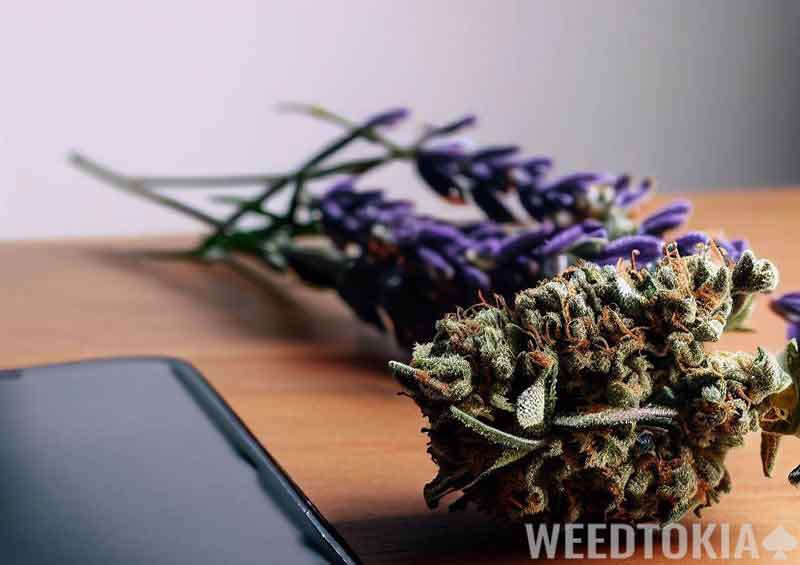
Just like tobacco, marijuana can be purchased in a mix with lavender, or you can add lavender to it yourself. We all know that “X and marijuana” is a topic that usually has to be approached with caution in case of drug interactions or dangerous combined effects, but this is not the case with lavender. Lavender and marijuana do not interact with each other in the body in a negative way, and since lavender doesn’t cause a high, there’s no potential for increased psychoactive effects.
In fact, since lavender and cannabis have at least one terpene in common, some people believe that the entourage effect applies to their combination. The entourage effect, in case you’re not familiar, is the idea that any cannabinoid or terpene found in cannabis are more effective when consumed at the same time as other cannabinoids or terpenes found in cannabis. This would mean that the effects of lavender are heightened when it’s consumed with marijuana.
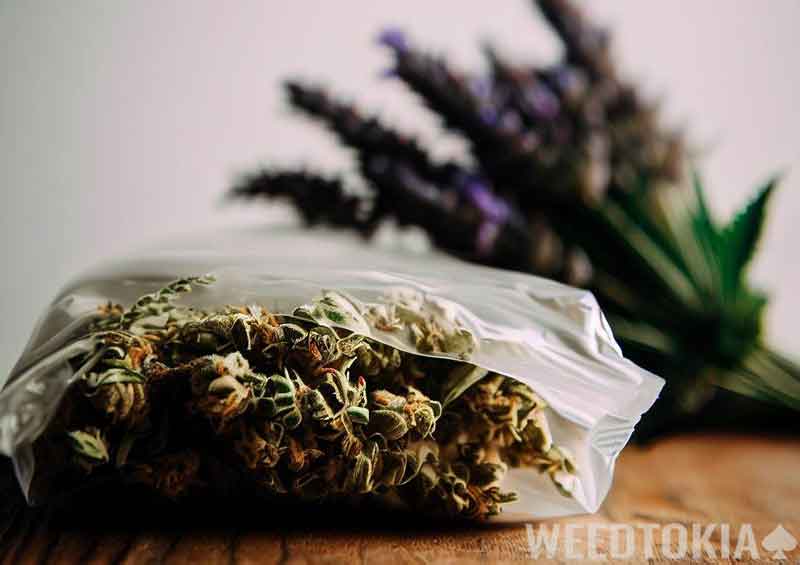
There have yet to be any studies proving the existence of the entourage effect, but since there’s no harm to be caused by smoking lavender and marijuana together, you can feel free to try it out and judge for yourself. Your premade or DIY lavender-marijuana blend can be used however you would normally use marijuana. The only thing we recommend avoiding with this is combining liquid forms; essential oils aren’t meant to be vaped, even if that’s your go-to way to consume marijuana.
Due to the calming effects of lavender, it’s best when added to your favorite “winding down” marijuana and smoked in the evening or before bed.
Safety For Smoking Lavender

Lavender is safe to smoke and safe to add to tobacco, marijuana, or other herbs, with a few exceptions. We want to take a moment to note those exceptions so that you can exercise caution if any of them apply to you.
People can develop allergies to any plant, including lavender. While having one type of allergic reaction to lavender, such as a reaction to touching or eating it, doesn’t necessarily mean you would have a reaction when consuming it a different way, we recommend that you don’t smoke lavender if you have any known sensitivities to it. Inhaling something that you are likely allergic to is a recipe for disaster.
Even if lavender is completely safe for you to smoke, some lavender may be treated with things that are not safe, like pesticides. This isn’t a concern if you grow your own lavender or buy a blend intended for smoking, but if you buy fresh or dried lavender intended for other purposes, it could be contaminated by something that isn’t safe to inhale. You may want to verify that this is not the case, or simply avoid the stress altogether by getting your lavender another way.
TLDR: All About Smoking Lavender

- Yes, Lavender can be smoked. It is a smokable herb with a long history in medicine, and it’s known for its calming effects.
- Lavender is a genus with different species and variations. If you have to get one, get English lavender, being it’s the most commonly used for smoking.
- The main component of lavender oil is linalool, a terpene that contributes to its sedative and anti-inflammatory effects.
- Smoking lavender can actually be beneficial due to the quick absorption of its chemical components through the lungs.
- Lavender can be smoked alone, added to tobacco or marijuana, and may help in quitting tobacco. You should also exercise caution for allergies and contaminants.
Lavender can be dried and smoked like any other smokable herb, and it offers a unique relaxation and calm thanks to its phytochemical makeup, which includes a significant amount of linalool. Whether you choose to smoke it on its own, with tobacco, with marijuana, or even as a cessation aid, it’s likely to reduce your physical and mental stress. Ensure that the lavender you use is grown safely, without dangerous contaminants, and avoid smoking lavender if you have a known allergy or sensitivity to it or to linalool.